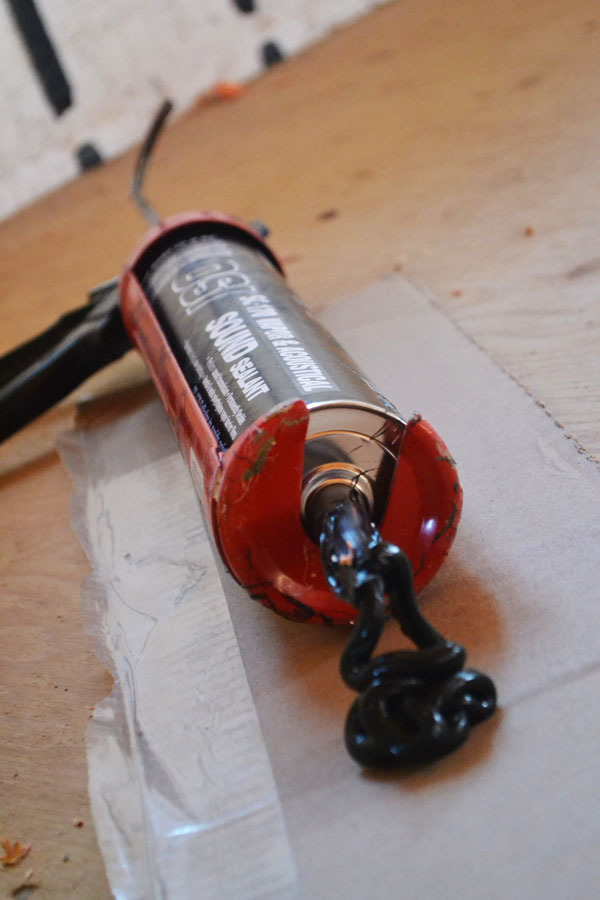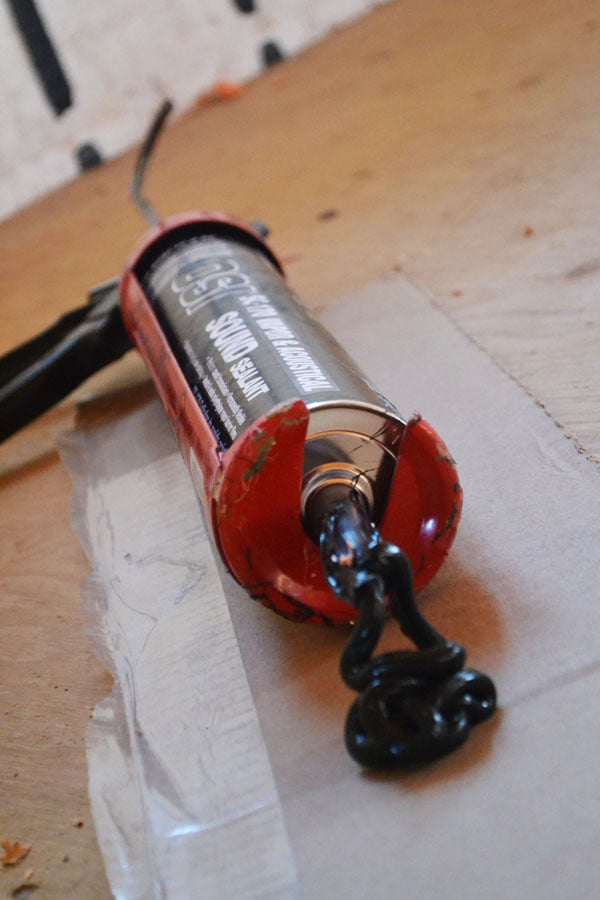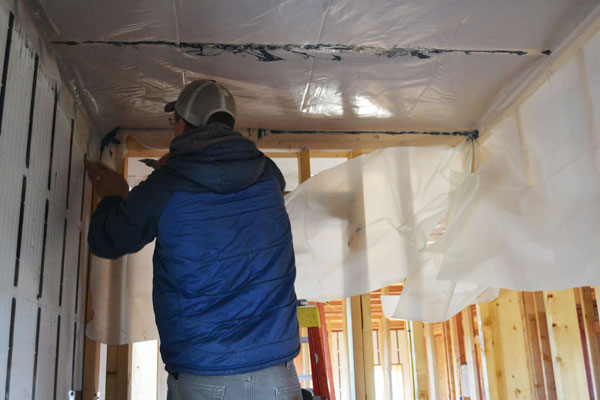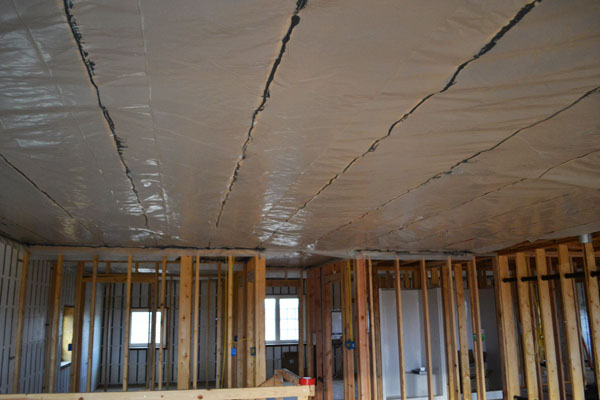Man are we ever getting close to that day.
For those of you who are new here, that day is the day when we have the Momplex full insulated, and it doesn't matter if it's -50 degrees outside, if the wind is blowing 80 MPH, if it's snowing . . . even if it's freezing rain. That day is the day we can work without -100 below boots and three layers of down. That day is the day we can work without gloves, when batteries can charge, and tools still work.
It's going to be a big day for us!
That day also is the day we get to officially start on the interior. Because today, and all the days up to it, even if we have been inside, sure don't feel like we are working inside.

We've got the electrical boxes in the ceiling, and all other utilities needed to be run through the ceiling installed. Wires have been run. The ceiling itself has been blocked as needed for hanging drywall. It is FINALLY time to finish off the roof!
Today is vapor barrier day.
Now before I get into this process, know that ever climate and type of building requires different insulating and moisture control. Case in point - our walls are ICF and no vapor barrier is required. So check with your local codes and find out what works in your climate for controlling moisture.
Where we live in Alaska, this is what happens if you don't have a vapor barrier in your ceiling or your vapor barrier is installed improperly:
Moisture builds up inside your house just by living in it (showering or boiling water can put cups of water into your house!). The moist air escapes the house through the ceiling and becomes frost in your attic when it meets -40 below air in the attic. The frost builds up through the winter. When spring comes, the frost melts, and the water saturates your insulation, and drips through your ceiling into your house, creating water damage and mold problems.
Vapor barrier is a good thing!

But here's the problem. When you put the vapor barrier up with staples, the stapled holes create opportunities for the moisture to escape through the ceiling. You can go back and tape the stapled holes, but then when you put drywall up and screw it on, you've got more holes in your vapor barrier.
I know this isn't a huge issue in other climate, but up here where half of the year it's winter, and on a winter day, there can be a 120 degree temperature difference between the inside and outside of your home (yes, it can be 70 degrees inside and -50 outside), you'll start seeing every single screw hole in your ceiling building up frost.
So what we do is put this tar stuff up on the studs in the ceiling.

This stuff never dries. It's like bubble gum that never dries. It is awful stuff. Do not get it on your shoes or in your hair, it will never come out.

The tar stuff gets applied to all the ceiling studs.

And it drips down, creating landmines of tar on the floor. I'm really careful to not let this stuff drip on my hair - having my hair washed in gasoline or the like doesn't sound like a good day at the spa.

For the vapor barrier, we roll it out on the floor.

And cut it to length with a utility knife.

Then the vapor barrier is spread out in the big room.

And brought into the room it will be installed.

Careful not to get tar on it!

Then you put the vapor barrier over your head.

Climb up the ladder

And start stapling it up. You want to pull tight here and do a neat job. We start in one corner and work our way to the other.

It gets stapled to the studs in the roof, over the tar stuff.

And then all the way over to the other corner.




Comments
Guest-2012-11-20 (not verified)
Tue, 11/20/2012 - 15:19
So are you saying the the
Ana White
Tue, 11/20/2012 - 15:34
Most people say the tar stuff
Anonymous Coward (not verified)
Tue, 11/20/2012 - 15:34
OK It seals all the holes?
Ana White
Tue, 11/20/2012 - 15:46
Yes - when the drywall is
GuestDennis dalton (not verified)
Fri, 11/23/2012 - 06:54
Insulation
Chris McG (not verified)
Tue, 11/20/2012 - 16:17
Just curious if you looked
Tisa (not verified)
Tue, 11/20/2012 - 17:12
Congratulations, how exciting
Jacob White
Tue, 11/20/2012 - 17:34
spray foam
Steph Claire (not verified)
Tue, 11/20/2012 - 18:56
Great post. What would you
In reply to Great post. What would you by Steph Claire (not verified)
Jacob White
Tue, 11/20/2012 - 23:03
Hi Steph, sorry to hear you
Anonymous Coward (not verified)
Wed, 11/21/2012 - 03:14
No barrier?
Steph Claire (not verified)
Wed, 11/21/2012 - 08:52
Thank you for all the good
UlrikeDG
Wed, 11/21/2012 - 09:08
There are DIY kits for spray
Chantelle - Th… (not verified)
Wed, 11/21/2012 - 10:17
Oh, how I hated the black goo!
JudeJ (not verified)
Thu, 11/22/2012 - 05:08
Extreme vapor barrier tip:
jeannette (not verified)
Thu, 11/22/2012 - 06:50
yes, to my fellow commenters,
Ricksite (not verified)
Sun, 11/25/2012 - 08:02
Insulation
Tony Burnell
Tue, 02/26/2013 - 04:57
How to kill mold
Robinod
Fri, 03/08/2013 - 03:27
vapor barrier